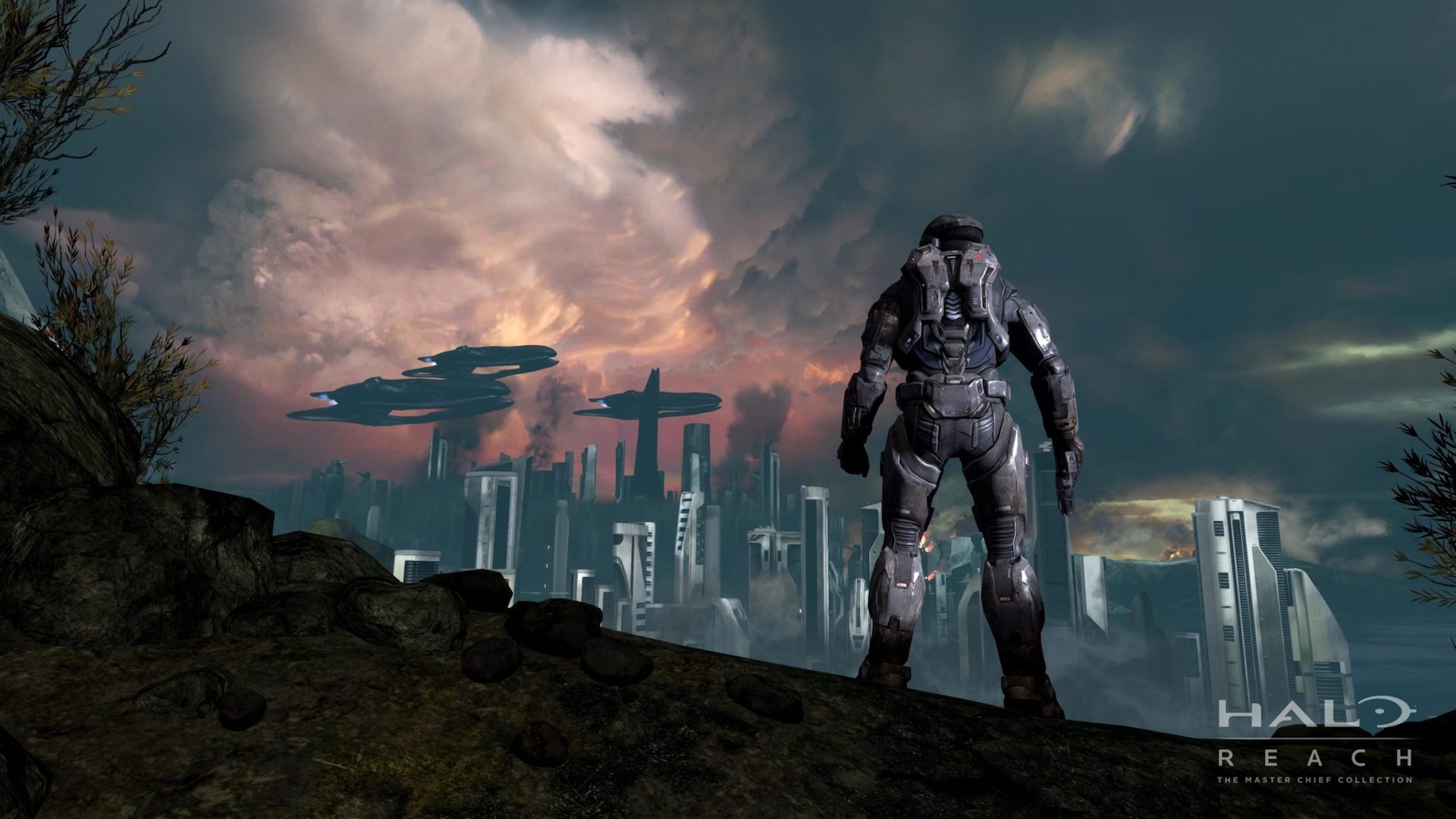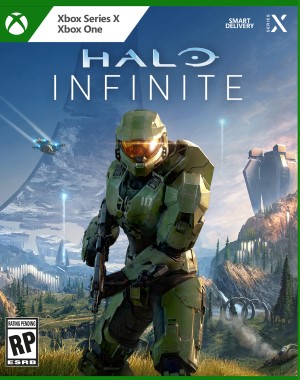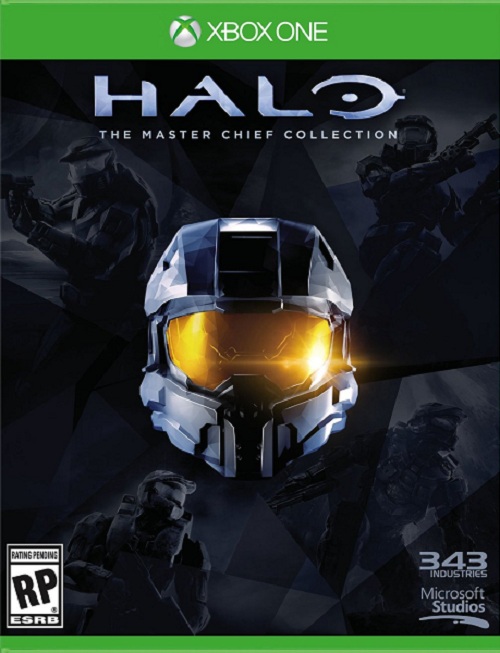
The Halo series has been around for 20 years now, which is kind of crazy for some of us to think about. There are people out there, right now, who were born after Halo started and are now adults and look back on the first few games like relics from an ancient civilization. As with any series that’s been consistently getting releases for that long, the Halo series has undergone a lot of sweeping changes to its gameplay, narrative, and visuals. While the visuals of even the oldest game can still hold up fairly well compared to most other games released around the same time, there is no denying that it’s gotten a lot better over the years. The history of Halo’s graphics is one that spans from the sixth generation of consoles and will eventually include the current generation assuming the upcoming Halo Infinite hits its current goal of releasing later this year, so with that there is quite a bit of history here. So in light of that and the upcoming newest release, now is as good a time as any to take a look at just how far the series has come from a visual standpoint.
In 2001, Halo: Combat Evolved graced our Xboxs as what would quickly be known as one of the best launch titles of all time. Seeing that the Xbox’s chief competitor, the PlayStation 2, was somewhat underpowered compared to Microsoft’s behemoth console, Halo was the perfect excuse for Bungie and Microsoft to really show off the power and capability of the Xbox – and that they did. Not only was the first game in the series a more than competent shooter that featured vehicles, a wide array of fun weapons, and a compelling multiplayer mode, but it was also a graphical showcase for the Xbox. With the PS2 being somewhat underpowered and the GameCube not really utilizing its potential with most of its games, this game really made the Xbox ecosystem stand out with its highly detailed character models and environments. Real-time reflections and shadows were rudimentary, and often mixed with fake ones, but they were convincing for the time among the lush, expansive environments and compelling aesthetic created by Bungie’s lead artists. The different alien factions all differed greatly in their general look as well as the technology they used, so that was reflected in their visual presentation to a huge degree. The game ran well, played well, and looked great, so it shouldn’t be too much of a surprise that it was remastered and re-released on the 360 and PC ten years later with some enhanced graphics and improved lighting and textures. This remastered “anniversary” version of Halo would allow players to switch back and forth between the old graphics and the new ones at any time, which was a nice touch, and also included support for the Kinect (remember that?). All in all, either version still looks good today by all reasonable standards, mostly thanks to the original artistic direction.
3 short years after the first game was released, we got Halo 2 on the same console. While the Xbox’s limits had been on full display for a while by this point, Bungie still had more than enough know-how and experience with the platform by then to really make a game that looked noticeably better than its predecessor. Halo 2 would serve as the pinnacle Halo experience up to that point, as it had basically everything that made the first game great but now with the extra 3 years, Bungie was able to iron out many of the original’s rough edges, as well as provide a robust multiplayer mode that looked indistinguishably as good as the campaign. Halo 2 would not merely be more of the same with some refinement though. The physics and graphics engine were both overhauled which allowed for several new techniques including “shadow volume” that would quickly become a mainstream way of casting real-time shadows from in-game environments. Doom 3 would also implement the same technique to an even greater effect, but that was after Halo 2 popularized it. Real-time reflections on armor and metal surfaces were also more pronounced as a result of the overhaul and it ultimately added up to one of the better looking games of its time as a result.
Halo 3 was sure to follow, and follow it did. This game would have the enormous benefit of being a game on new hardware, but also not quite needing to be a launch title, so Bungie had a bit more time to really crank out as much goodness as they could from the Xbox 360. Here we see yet again, a complete overhaul of the graphics engine. Bungie went with their own in-house development toolset and it really paid off with better lighting, depth of field effects, and a subtle motion blur that added a heightened sense of realism. While some of the techniques under the hood did require the game to render at an odd 1152×640 resolution, that was technically upscaled to a stable 1080pby the 360, making it a very sharp-looking game.
Halo ODST was an interesting game. It started out as a rather beefy expansion to Halo 3, but ultimately ended up being its own standalone release given the sheer amount of content that it contained. Given that this was only a couple years since Halo 3 launched, graphically it had more in common with it’d predecessor than not, making it the first game in the series that didn’t look like a massive improvement from the previous one. Which isn’t to say it was underwhelming in that department, just nothing to write home about in 2009. Outside of some interesting visual flair thrown in for flashback sequences, it was largely just a slightly more refined version of the look of 3.
The final Halo game to be developed by Bungie was Halo: Reach. The game had a lot of callback visual cues that more than successfully elicited plenty of nostalgia for long-time Halo fans despite Master Chief not even being the main character. The graphics were largely unchanged from 3. Much like ODST, Reach already had a solid foundation on which to build a great looking game, and it didn’t disappoint. The large battles, lush backdrops, and nice variety of locations does feel a bit limited by the 360 at times in Reach, but the occasional framerate stutter was not much more than a minor flaw in an otherwise gorgeous game.
Halo 4 was a landmark game in the series for myriad reasons, but most notably was the fact that Bungie would have basically nothing to do with it. By this time, the former Halo developer had split from Microsoft and gone multiplatform and were working on their upcoming original shooter Destiny. The Halo series would finally change hands with 343 Industries at the helm. While the game was primarily designed for the aging Xbox 360, it was also 2012, which means Microsoft’s next console was also kept in mind for a future enhanced release. While the slight tick up from Halo 3 was noticeable, the biggest changes seemed to come from a totally different artistic vision rather than technical improvements. Halo 4 was a game that still “felt” like Halo ultimately, but it also had a slightly darker tone to its visuals. Master Chief looks more weathered, his armor seems bulkier, and he’s just more imposing overall. Other characters’ facial expressions were brimming with subtle movements and emotive performances, which made them some of the best in the generation – across all platforms. 343 were handed such a finely-tuned playbook on how to make a Halo game, that they were able to really stretch beyond what most thought was doable on an Xbox 360 with global illumination, ambient occlusion, and image-based lighting that all basically added up to a very impressive illumination and shadow system that made some environments look positively next gen. As impressive as it was, it was really just a preamble to what the next game had in store. Halo 4 would also get that very logical Xbox One release a couple years later with some minor enhancements and a smoother frame-rate. This was in 2014, which was a perfect time to whet the appetites of Halo fans as they were eagerly awaiting the 5th mainline installment.
By this time Halo had done almost everything it could do. It had maxed out the capabilities of two console generations and seen enhanced PC and next gen versions get released. Even though many still considered the series the best its genre had to offer, it still had to share much more of the stage with Call of Duty, Battlefield, and Bungie’s new game Destiny. Among the things Halo 5 tried to stand out was its aiming to be the best looking first-person shooter to date, and while it didn’t slam dunk that goal as hard as it did with past entries, it certainly satisfied the eyeballs of those who played it. Gone were the vast majority of the baked in fake lighting effects of the past two generations, and gone were the majority of other tricks Bungie had to implement to make the previous games look better than they actually were. Halo 5 backed off a tad from the slightly drearier look of 4, and somewhat tiptoed back into the look of the older games with more green, lush, outdoor locations, and highly realistic water. Halo 5 did hang on to all the advancements in detail of character models that show wear and tear on various pieces of armor, though. 343 also wisely chose to continue valuing the frame-rate over resolution, and with the seamless dynamic resolution of Halo 5 in place, the game could go from 1080p while you’re walking around and taking in the atmosphere, to 720p during an intense firefight, and right back up without you ever even noticing a thing. The PC version would need to do this less of course, depending on the rig, but both the Xbox One and PC version of the game looked great.
Now, all of these games are playable on PC, Xbox One, and the Xbox Series X in their ultimate forms. The most drastic improvements can be found in the Halo: Master Chief Collection which contains all of the games we’ve mentioned here before Halo 5. Depending on the game and the hardware you’re using, the games vary in how much of an upgrade they are, but even the most conservative version of the Master Chief Collection on the Xbox One is a sight to behold with much higher resolutions and rock-solid frame rates. While the collection launched in a somewhat rocky state, and that rightly impacted its reputation for a while, playing it today with all of the current updates and patches is far and away the best way to experience these games.
With Halo Infinite on the way, and 343 surely understanding that we’ll be paying close attention to its graphics, we are likely in for yet another visual stunner from the flashy, science fiction franchise that reinvented its genre all those years ago.


















